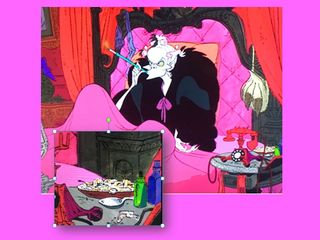
Depression
Disney Plus Dream Job: '101 Dalmatians'
Viewing '101 Dalmatians' through the psychiatrist's lens
Posted December 7, 2019
Introduction
Faculty, residents, and students at my university are participating in the Disney Plus Dream Job to watch 30 Disney films in 30 days. The course directors successfully incorporated the 30 films (and shows) into our preexisting curriculum, which teaches psychiatry to future physicians through film and other aspects of popular culture. Views Through the Psychiatrist’s Lens will publish daily blogs throughout the 30-day Disney Plus Dream Job. Our ninth blog is on the 1961 film, 101 Dalmatians.
Synopsis
101 Dalmatians is an animated film produced by Walt Disney Productions based on the 1956 novel The Hundred and One Dalmatians by Dodie Smith. The film tells the story of a litter of puppies who are kidnapped by Cruella de Vil, who wants to kill them to make Dalmatian fur coats. At the time of this posting, the film holds a rating of 7.2 out of 10 on IMDb and a Tomatometer rating of 98 percent on Rotten Tomatoes.
How it relates to the field of psychiatry
Despite the classic’s title, the 101 eponymous characters serve to introduce Cruella de Vil, who is ranked 39th on the American Film Institute’s list of “100 Years...100 Heroes and Villains” (1). Her character was partly inspired by Bette Davis and Betty Lou Gerson (voice actress), with whom Marc Davis added cheekbones to the character. It is these prominent cheekbones that highlight the character's cachexia that, along with pallor and that omnipresent cigarette (Figure 1), sheds light on why she is so "Cruella."

On the right side of Figure 1, we also see tonics on her night table (enlarged for ease of identifying). Taken together, it is reasonable to assume that Cruella is afflicted with a general medical condition that explains her irritability. Taken a step further, if we formulate her irritability as analogous to a depressed mood, then 101 Dalmatians may be interpreted as a case study of depression due to another medical condition.
Identifying the Underlying Medical Condition
Depression affects up to 20 percent of patients with cancer, resulting in higher rates of mortality. The pathogenesis of the cancer-related depressive disorder is multifactorial and includes systemic inflammation from the cancerous state (e.g., proinflammatory cytokines) that increases the activity of indolamine-2,3-dioxygenase (IDO), an enzyme that reduces levels of serotonin (3). Serotonin is a neurotransmitter that at low levels contributes to the pathogenesis of Major Depressive Disorder.
The primary site of cancer also influences the rates of depression, with depression being most common in pancreatic and lung cancer (4). While cigarette smoking is a risk factor for both lung and pancreatic cancer (5), clinicians often adhere to the maxim, “When you hear paw hoofbeats, think of horses, not zebras.” Lung cancer accounts for about 13 percent of all cancer diagnoses and is the leading cause of cancer death among both men and women (6). Each year, more people die of lung cancer than of pancreatic, colon, breast, and prostate cancers combined (7).
Despite the compelling evidence that Cruella de Vil suffers from depression due to the physiologic effects of underlying lung cancer, I still believe an occult pancreatic malignancy must be investigated. By nature of the colors of the 101 dalmatians, this time, a zebra, and not a horse, is likely to be making those hoofprints. If the cartoon had been titled 101 Basenjis, then the diagnosis of lung cancer would be a slam dunk.
References
American Film Institute’s 100 Years...100 Heroes & Villains at afi.com.
Depression and cancer mortality: a meta-analysis. Pinquart M, Duberstein PR, Psychol Med. 2010 Nov; 40(11):1797-810.
From inflammation to sickness and depression: When the immune system subjugates the brain. Dantzer R, O'Connor JC, Freund GG, Johnson RW, Kelley KW, Nat Rev Neurosci. 2008 Jan; 9(1):46-56.
Anxiety and depression after cancer diagnosis: Prevalence rates by cancer type, gender, and age. Linden W, Vodermaier A, Mackenzie R, Greig D, Jour Affect Disord. 2012 Dec 10; 141(2-3):343-51.
Prospective risk of pancreatic cancer in familial pancreatic cancer kindreds. Klein AP, Brune KA, Petersen GM, Goggins M, Tersmette AC, Offerhaus GJ, Griffin C, Cameron JL, Yeo CJ, Kern S, Hruban RH, Cancer Res. 2004 Apr 1; 64(7):2634-8.
Siegel RL, Miller KD, Jemal A. Cancer Statistics, 2018. CA: A Cancer Journal for Clinicians. 2018; 68:7-30. doi:10.3322/caac.21442.

